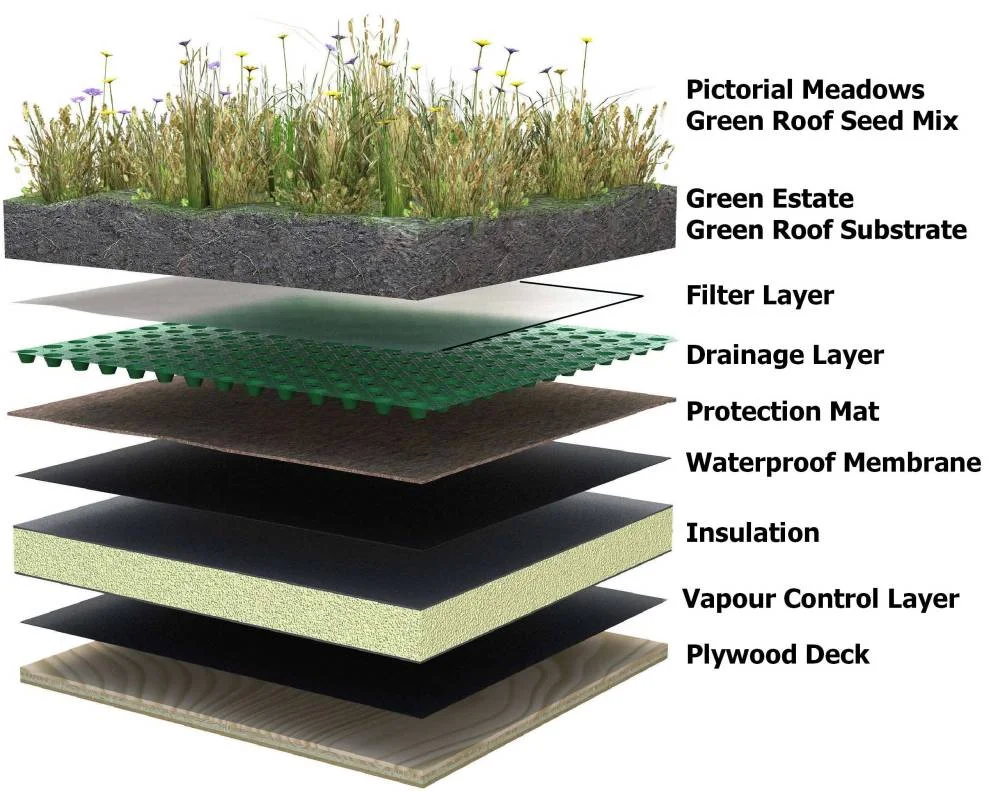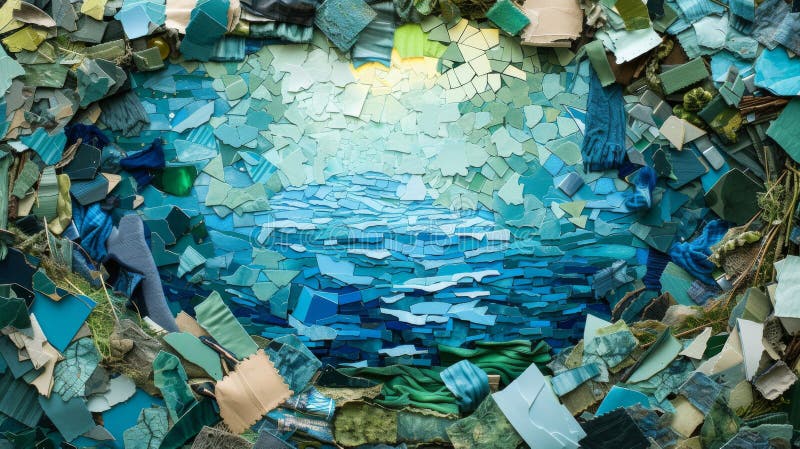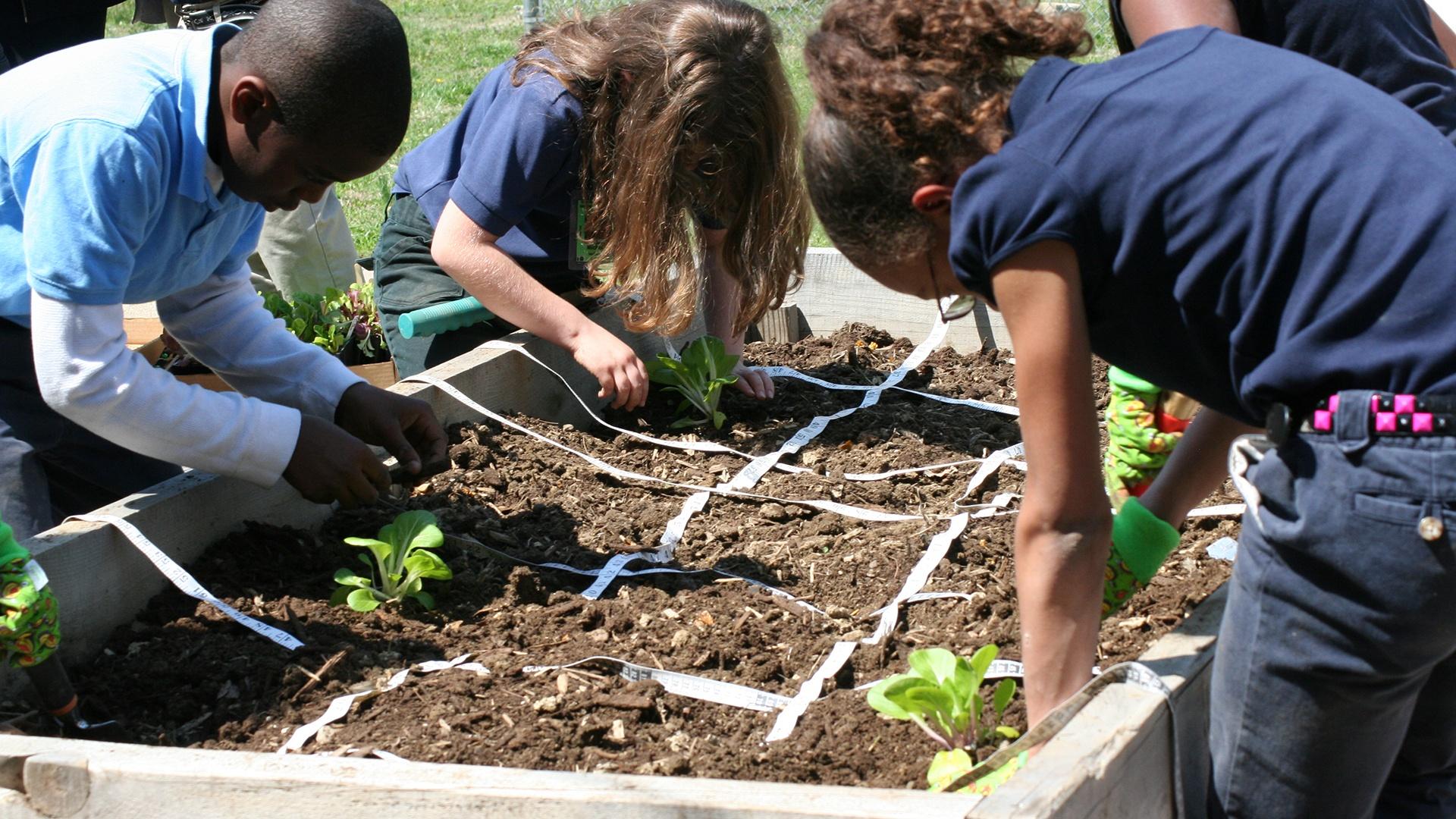
Introduction: Embracing Green Roofs for a Sustainable Future
In an era defined by environmental consciousness, the concept of sustainable green roof design has emerged as a powerful tool for mitigating the adverse effects of urbanization. A green roof, simply put, is a rooftop covered with vegetation and a growing medium, installed over a waterproofing membrane. But it’s so much more than just a garden on your roof. It’s an ecosystem, a natural insulator, and a statement of commitment to a greener planet. From bustling city centers to quiet suburban homes, green roofs are transforming the way we think about buildings and their relationship with the environment.
This comprehensive guide delves into the intricacies of sustainable green roof design, exploring its myriad benefits, design considerations, installation processes, and long-term maintenance strategies. Whether you’re an architect, a homeowner, or simply an environmentally conscious individual, this guide will provide you with the knowledge and inspiration to create your own thriving green rooftop oasis.
The Multifaceted Benefits of Green Roofs
The advantages of implementing green roofs extend far beyond mere aesthetics. They offer a compelling array of environmental, economic, and social benefits, making them a truly sustainable solution for modern building design.
Environmental Advantages
- Stormwater Management: Green roofs act as natural sponges, absorbing rainwater and reducing runoff. This alleviates pressure on sewage systems, minimizes flooding, and prevents pollutants from entering waterways. The plants and growing medium retain a significant portion of rainfall, gradually releasing it back into the atmosphere through evapotranspiration.
- Urban Heat Island Reduction: Cities tend to be significantly warmer than surrounding rural areas due to the abundance of concrete and asphalt, which absorb and retain heat. Green roofs combat this urban heat island effect by providing shade and cooling the air through evapotranspiration. This can lead to lower energy consumption for air conditioning and improved air quality.
- Air Quality Improvement: Green roofs filter pollutants and dust particles from the air, contributing to cleaner and healthier urban environments. Plants absorb carbon dioxide, a major greenhouse gas, and release oxygen, further improving air quality.
- Biodiversity Enhancement: Green roofs provide valuable habitats for birds, insects, and other wildlife, particularly in urban areas where natural habitats are scarce. They can create mini-ecosystems, supporting biodiversity and fostering a connection with nature in the heart of the city.
- Carbon Sequestration: The plants on green roofs absorb carbon dioxide from the atmosphere, helping to mitigate climate change. The growing medium also stores carbon, further reducing the carbon footprint of buildings.
Economic Advantages
- Energy Savings: Green roofs provide insulation, reducing the need for heating in winter and cooling in summer. This can lead to significant energy savings and lower utility bills.
- Extended Roof Lifespan: Green roofs protect the underlying roofing membrane from the elements, such as UV radiation and temperature fluctuations, which can cause premature degradation. This can extend the lifespan of the roof by decades, saving on replacement costs.
- Increased Property Value: Green roofs enhance the aesthetic appeal of buildings and demonstrate a commitment to sustainability, which can increase property value. They are increasingly seen as a desirable feature by homebuyers and tenants.
- Reduced Stormwater Fees: Many cities offer incentives or reduced stormwater fees for properties with green roofs, recognizing their contribution to stormwater management.
Social Advantages
- Improved Well-being: Studies have shown that exposure to nature can reduce stress, improve mood, and enhance cognitive function. Green roofs provide access to green spaces in urban environments, promoting well-being and creating a more pleasant living and working environment.
- Community Engagement: Green roofs can be used as community gardens, providing opportunities for residents to grow their own food and connect with nature. They can also serve as educational spaces, raising awareness about sustainability and environmental issues.
- Aesthetic Enhancement: Green roofs transform drab rooftops into vibrant green spaces, adding beauty and visual interest to the urban landscape. They can create a more inviting and aesthetically pleasing environment for residents and visitors.
Types of Green Roofs: Choosing the Right Option for Your Needs
Green roofs are not a one-size-fits-all solution. They come in various types, each with its own characteristics, advantages, and limitations. The choice of green roof type will depend on factors such as the building’s structural capacity, budget, desired aesthetic, and intended use.
Extensive Green Roofs
Extensive green roofs are characterized by their shallow growing medium (typically 2-6 inches), low maintenance requirements, and relatively low weight. They are typically planted with drought-tolerant, self-sustaining vegetation such as sedums, grasses, and herbs. Extensive green roofs are ideal for large-scale applications on buildings with limited structural capacity. They are also a cost-effective option for those seeking a low-maintenance green roof solution.
Intensive Green Roofs
Intensive green roofs have a deeper growing medium (typically 6 inches or more) and can support a wider variety of plants, including shrubs, trees, and even vegetable gardens. They require more maintenance than extensive green roofs, including regular watering, fertilizing, and weeding. Intensive green roofs are more like traditional gardens and can be designed for recreational use, such as rooftop patios or parks. They require a stronger roof structure to support the added weight.
Semi-Intensive Green Roofs
Semi-intensive green roofs fall somewhere in between extensive and intensive green roofs. They have a moderate growing medium depth and can support a mix of low-growing and taller plants. They require moderate maintenance and are a good option for those seeking a balance between aesthetics, functionality, and cost.
Modular Green Roofs
Modular green roofs consist of pre-vegetated trays or modules that are installed on the rooftop. This system simplifies the installation process and allows for easy maintenance and replacement of plants. Modular green roofs are a good option for retrofitting existing buildings or for projects with tight deadlines.
Brown Roofs
Brown roofs are a type of green roof that is designed to mimic natural brownfield habitats. They typically consist of a layer of crushed rubble or recycled materials topped with a thin layer of soil. Brown roofs are designed to support biodiversity and provide habitat for invertebrates and other wildlife. They require minimal maintenance and are a good option for those seeking a low-impact green roof solution.
Designing a Sustainable Green Roof: Key Considerations
Designing a sustainable green roof requires careful planning and attention to detail. Several key considerations must be taken into account to ensure the long-term success and sustainability of the project.
Structural Capacity
The first and foremost consideration is the structural capacity of the building. Green roofs add significant weight to the roof structure, so it’s essential to ensure that the building can support the additional load. A structural engineer should be consulted to assess the building’s load-bearing capacity and determine the appropriate type and depth of green roof.
Waterproofing
A reliable waterproofing system is crucial to prevent water damage to the building. The waterproofing membrane must be durable, puncture-resistant, and compatible with the growing medium and vegetation. It should also be properly installed and maintained to ensure its long-term effectiveness.
Drainage
Proper drainage is essential to prevent waterlogging and root rot. A drainage layer should be installed beneath the growing medium to allow excess water to drain away from the roof. The drainage system should be designed to handle heavy rainfall and prevent water from pooling on the roof surface.
Growing Medium
The growing medium is the foundation of the green roof ecosystem. It should be lightweight, well-draining, and able to retain moisture and nutrients. The growing medium should also be free of contaminants and compatible with the chosen vegetation. A variety of engineered growing media are available specifically for green roof applications.
Vegetation
The choice of vegetation will depend on the type of green roof, the climate, and the desired aesthetic. Native plants are generally the best choice, as they are adapted to the local climate and require less maintenance. Drought-tolerant plants are also a good option, especially for extensive green roofs. Consider the mature size and growth habits of the plants to ensure they will not damage the waterproofing membrane or create excessive shade.
Irrigation
While some green roofs can thrive without irrigation, most will require supplemental watering, especially during dry periods. A drip irrigation system is the most efficient way to water a green roof, as it delivers water directly to the plant roots. A rainwater harvesting system can be used to collect rainwater for irrigation, further reducing the environmental impact of the green roof.
Maintenance
Green roofs require ongoing maintenance to ensure their long-term health and sustainability. Maintenance tasks include weeding, fertilizing, pruning, and inspecting the waterproofing membrane and drainage system. A regular maintenance schedule should be established to prevent problems from developing and ensure the green roof continues to thrive.
Installation Process: A Step-by-Step Guide
The installation of a green roof is a complex process that requires careful planning and execution. Here’s a step-by-step guide to help you navigate the installation process:
- Assessment: Conduct a thorough assessment of the building’s structural capacity, waterproofing system, and drainage.
- Design: Develop a detailed design plan that includes the type of green roof, the growing medium, the vegetation, and the irrigation system.
- Preparation: Prepare the roof surface by cleaning it and repairing any damage.
- Waterproofing: Install a high-quality waterproofing membrane.
- Drainage: Install a drainage layer to facilitate water runoff.
- Growing Medium: Install the growing medium according to the design specifications.
- Vegetation: Plant the vegetation according to the design plan.
- Irrigation: Install the irrigation system.
- Monitoring: Monitor the green roof regularly to ensure it is thriving.
Sustainable Materials and Practices for Green Roof Construction
To truly embrace sustainability, it’s crucial to consider the materials and practices used in green roof construction. Choosing eco-friendly options can minimize the environmental impact of the project and contribute to a more sustainable future.
Recycled and Recyclable Materials
Opt for recycled and recyclable materials whenever possible. This includes using recycled aggregates in the drainage layer, recycled plastic for the drainage mat, and recycled content in the growing medium. Choose plant containers made from recycled materials and ensure that all materials are recyclable at the end of their lifespan.
Locally Sourced Materials
Sourcing materials locally reduces transportation costs and emissions. It also supports local businesses and economies. Choose a growing medium that is sourced from local suppliers and select plants that are native to the region.
Lightweight Materials
Using lightweight materials reduces the load on the building structure and minimizes the need for structural reinforcement. Choose a lightweight growing medium and opt for lightweight drainage systems.
Water Conservation
Implement water conservation strategies to minimize water usage. Install a rainwater harvesting system to collect rainwater for irrigation. Choose drought-tolerant plants that require minimal watering. Design the irrigation system to be efficient and targeted, delivering water only where it’s needed.
Energy Efficiency
Use energy-efficient equipment and practices during the installation process. Opt for hand tools instead of power tools whenever possible. Use energy-efficient lighting and heating in any temporary structures. Minimize waste and recycle materials to reduce energy consumption.
Maintaining Your Green Roof: Ensuring Long-Term Success
Regular maintenance is essential to ensure the long-term health and sustainability of your green roof. A well-maintained green roof will thrive for many years, providing numerous environmental, economic, and social benefits.
Regular Inspections
Conduct regular inspections of the green roof to identify any potential problems. Check for leaks, drainage issues, plant diseases, and pest infestations. Inspect the waterproofing membrane for damage and ensure that the drainage system is functioning properly.
Weeding
Weeding is an essential maintenance task, especially during the first few years after installation. Remove weeds regularly to prevent them from competing with the desired vegetation. Use hand tools or organic herbicides to control weeds.
Fertilizing
Fertilize the green roof regularly to provide the plants with the nutrients they need to thrive. Use a slow-release organic fertilizer to avoid nutrient runoff and pollution. Test the soil regularly to determine the appropriate fertilizer application rate.
Pruning
Prune the vegetation regularly to maintain its shape and health. Remove dead or damaged branches and trim back overgrown plants. Pruning can also improve air circulation and prevent plant diseases.
Irrigation
Monitor the irrigation system regularly to ensure it is functioning properly. Check for leaks and clogs and adjust the watering schedule as needed. Water the green roof deeply but infrequently to encourage deep root growth.
Drainage Maintenance
Maintain the drainage system to prevent clogging and ensure proper water flow. Remove any debris that may accumulate in the drains. Flush the drainage system periodically to remove sediment and buildup.
Pest Control
Implement integrated pest management (IPM) strategies to control pests without harming the environment. Use natural predators and beneficial insects to control pests. Avoid using harsh chemical pesticides.
Case Studies: Inspiring Examples of Sustainable Green Roof Design
Numerous successful green roof projects around the world demonstrate the potential of this technology to transform urban environments. Here are a few inspiring case studies:
The High Line, New York City
The High Line is a 1.45-mile-long elevated park built on a former New York Central Railroad spur. The park features a diverse range of plants and landscapes, creating a unique and vibrant urban oasis. The High Line has transformed a derelict industrial site into a popular tourist destination and a valuable green space for the community.
The Chicago City Hall Green Roof
The Chicago City Hall Green Roof is a 20,000-square-foot green roof located on the roof of Chicago City Hall. The green roof features a variety of native plants and is used to study the benefits of green roofs, such as stormwater management and energy savings. The Chicago City Hall Green Roof has served as a model for other green roof projects around the world.
The Gardens by the Bay, Singapore
The Gardens by the Bay is a 101-hectare park in Singapore that features a variety of gardens, including a collection of vertical gardens called Supertrees. The Supertrees are covered in plants and equipped with solar panels and rainwater harvesting systems. The Gardens by the Bay is a stunning example of how green infrastructure can be integrated into urban design.
The Future of Green Roofs: Innovations and Trends
The field of green roof technology is constantly evolving, with new innovations and trends emerging all the time. Here are a few of the key trends shaping the future of green roofs:
Biodiversity-Focused Design
Increasingly, green roofs are being designed with biodiversity in mind. This involves selecting plants that support a wide range of insects, birds, and other wildlife. It also includes creating diverse habitats within the green roof, such as areas of bare ground, rock piles, and standing water.
Edible Green Roofs
Edible green roofs are becoming increasingly popular, as they provide a source of fresh, local produce in urban areas. These green roofs can be used to grow vegetables, herbs, and fruits. They can also be used as educational spaces, teaching people about sustainable food production.
Green Walls
Green walls, also known as vertical gardens, are becoming increasingly popular as a way to add greenery to buildings in urban areas. Green walls can be used to improve air quality, reduce the urban heat island effect, and enhance the aesthetic appeal of buildings.
Smart Green Roofs
Smart green roofs are equipped with sensors and controls that allow them to be monitored and managed remotely. These systems can be used to optimize irrigation, fertilization, and other maintenance tasks. They can also be used to collect data on the performance of the green roof, such as stormwater runoff and energy savings.
Conclusion: Embracing the Green Roof Revolution
Sustainable green roof design is more than just a trend; it’s a fundamental shift in the way we think about buildings and their relationship with the environment. By embracing green roofs, we can create more sustainable, resilient, and livable cities. From reducing stormwater runoff and improving air quality to enhancing biodiversity and promoting well-being, the benefits of green roofs are undeniable. As technology advances and awareness grows, the green roof revolution is poised to transform our urban landscapes, creating a greener and more sustainable future for all.
The journey to a greener world starts with small steps, and choosing to incorporate a sustainable green roof into your next project, or even retrofitting an existing building, is a significant stride in the right direction. Let’s embrace the green roof revolution and build a future where buildings and nature coexist in harmony.


